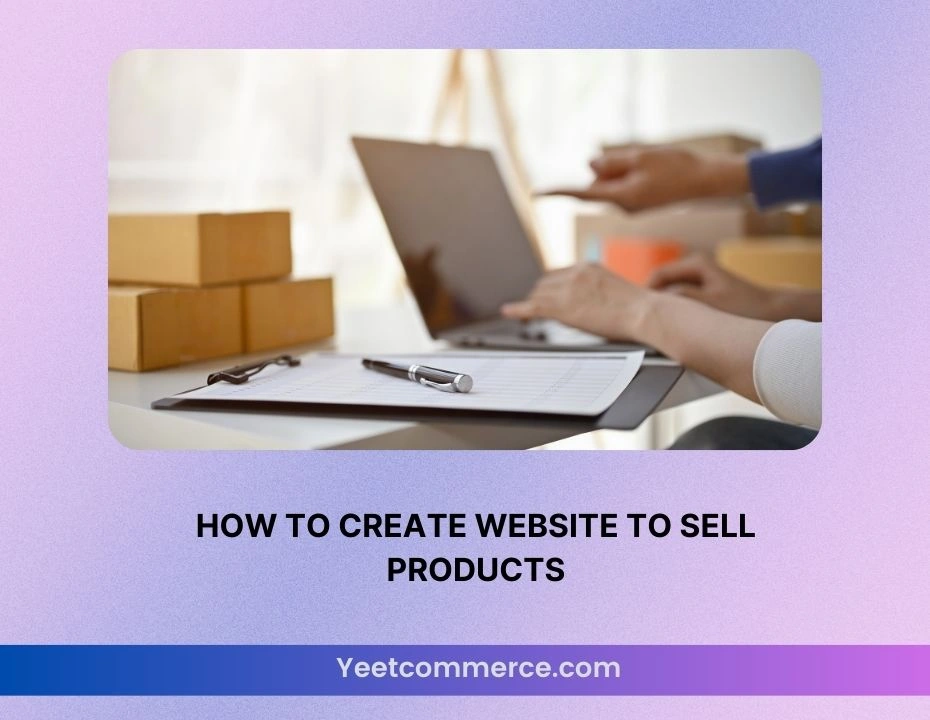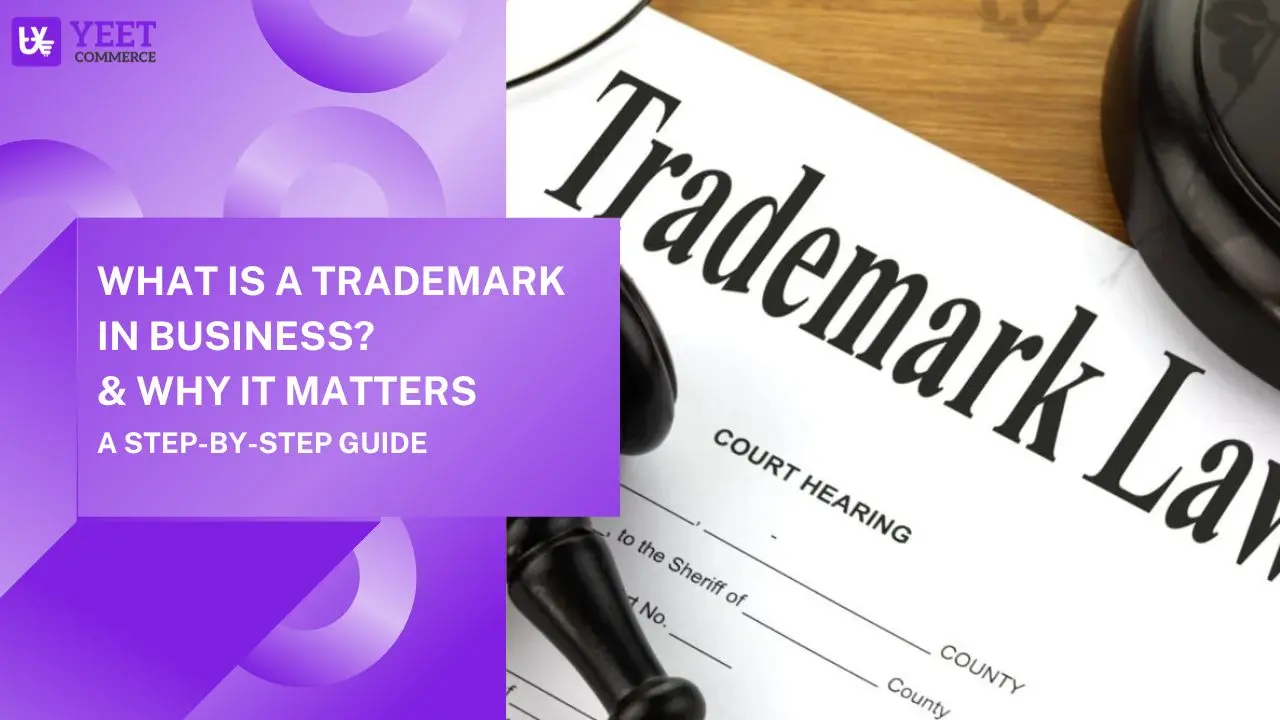Creating a website to sell products is an essential move for any business aiming to succeed in today’s digital landscape. With the right strategy, you can expand your reach, increase sales, and cultivate a loyal customer base. This guide will provide you with the key steps on how to create a website to sell products effectively. From choosing the best eCommerce platform to optimizing your product pages, we’ll cover everything you need to know to turn your online store into a thriving enterprise. Let’s dive into building a website that not only draws in visitors but also converts them into devoted customers.
Understanding the Needs of Your Business
Understanding the needs of your business is the foundation for creating a successful eCommerce website. By identifying your niche, knowing your audience, choosing the right platform, designing for sales, optimizing for mobile, and creating compelling content, you’re well on your way to building a digital storefront that stands out in the competitive online market. A well-designed website can significantly boost your product and service sales, but it’s essential to consider several factors beforehand. You need to grasp the specific needs of your online business and your target audience, as well as the demands and preferences of your customers. Let’s explore these essentials step by step.
Identifying Your Product Niche
First things first, what are you passionate about selling? Whether it’s handmade crafts, trendy fashion items, or niche electronics, identifying your product niche is key. Your website should reflect your passion and expertise, making it easier to connect with your target audience. By honing in on your specific niche, you can tailor your products, marketing strategies, and customer experience to align perfectly with your target market’s interests and needs.
Understanding Your Target Audience
Who are your potential customers, and what do they need? Implementing a comprehensive Know Your Customer (KYC) strategy will guide how you design your website. Are they tech-savvy millennials looking for the latest gadgets, or perhaps busy parents seeking convenient household solutions? Tailor your site to their preferences and shopping behaviors. Understanding your customers’ demographics, interests, and purchasing habits through KYC will help you create a user-friendly website that meets their expectations and encourages repeat visits.
Common Mistakes to Avoid When Building Your Website

Building a website to sell products is an exciting journey, but it’s easy to stumble into common pitfalls. Let’s explore the typical mistakes to avoid when creating your online business website and understand why they occur, so you can forecast and prevent them for a smoother, more successful launch.
Overlooking User Experience
One of the biggest mistakes you can make is ignoring user experience (UX). Your website should be easy to navigate, with a clean design that guides visitors effortlessly. Cluttered layouts and confusing menus can frustrate users, driving them away. Keep things simple and intuitive. Prioritize clear calls-to-action and ensure that your site is mobile-friendly. Remember, a happy visitor is more likely to become a happy customer.
Neglecting Mobile Optimization
In today’s mobile-first world, failing to optimize your website for mobile devices is a major misstep. A significant portion of online shoppers use their phones to browse and buy products. If your site isn’t mobile-friendly, you’ll lose potential customers. Test your website on various devices and screen sizes. Make sure images and text are responsive, and navigation remains seamless. You want users to have a smooth experience, regardless of how they access your site.
Skipping the Testing Phase
Launching a website without thorough testing is like setting sail without checking for leaks. You need to test every aspect of your site, from page loading times to checkout processes. Broken links, slow pages, and errors can deter customers. Conduct usability testing with real users to catch any issues you might have missed. Regularly check your site’s performance and make adjustments as needed. A smooth, glitch-free experience keeps customers coming back.
Not Having a Clear Marketing Strategy
Building a great website is just the first step. Without a solid marketing strategy, your site might remain unnoticed. Plan how you’ll promote your website and attract visitors. Use social media, email marketing, and paid advertising to reach your target audience. Consistent marketing efforts will drive traffic and boost sales. Keep track of your campaigns and adjust them based on performance. Marketing is an ongoing process that helps sustain your online presence.
Underestimating the Importance of Content
Content is king in the digital world. Poor-quality content can harm your credibility and turn visitors away. Invest time in creating engaging, informative, and valuable content. This includes product descriptions, blog posts, and multimedia elements. Use your content to address your audience’s needs and interests. High-quality content can build trust, establish authority, and improve SEO. Regularly update your content to keep it fresh and relevant.
Ignoring Analytics and Feedback
To continuously improve your website, you need to pay attention to analytics and customer feedback. Use tools like Google Analytics to track visitor behavior, traffic sources, and conversion rates. Analyzing this data helps you understand what works and what doesn’t. Additionally, listen to your customers’ feedback. They can provide valuable insights into areas that need improvement. Regularly reviewing analytics and feedback ensures your site evolves to meet users’ needs.
Choosing the Right Features for Your Online Store: Optimizing Product Pages for Conversion
Now, let’s delve into the technical side. Choosing the right eCommerce platform can make or break your online business. A critical aspect to master is optimizing your product pages for conversions. By understanding how to create a website that effectively sells products, you can turn casual visitors into loyal customers. Look for platforms that offer user-friendly interfaces, secure payment gateways, and customizable templates. Platforms like YeetCommerce provide all these features and more, allowing you to focus on growing your business rather than dealing with technical hassles. Let’s dive into some key strategies to make your product pages shine.
click here to watch the tutorial video “How to Create Your Online Store in one minute“
Highlight Key Product Information
When someone lands on your product page, they should immediately see the essential details. Your product title should be clear and descriptive. Next, include a concise product description highlighting the main features and benefits. Avoid jargon and focus on what your customers need to know.
Adding high-quality images and videos is a game-changer. Show your product from different angles and in use. Visuals help potential buyers understand what they’re getting and increase their confidence in the purchase. Don’t forget to use alt text for your images to improve SEO.
Leverage Customer Reviews and Ratings
Customer reviews and ratings are gold mines for conversions. Positive reviews build trust and provide social proof that your product is worth buying. Make it easy for satisfied customers to leave reviews by sending follow-up emails post-purchase. Display these reviews prominently on your product pages.
For a more dynamic approach, consider adding video testimonials. These can be more engaging and convincing than text alone. If you have a star rating system, show the average rating near the top of the page so it’s one of the first things visitors see.
Provide Detailed Shipping Information
Uncertainty about shipping can be a significant barrier to conversion. Make sure your shipping information is clear and accessible. Outline the shipping options, costs, and estimated delivery times. If you offer free shipping, highlight this perk prominently on your product pages.
Consider adding a shipping calculator that allows customers to enter their zip code and see the exact cost and delivery date. This transparency can reduce cart abandonment and increase conversions.
YeetCommerce simplifies shipping information management. You can easily set up shipping options, costs, and delivery times. With built-in shipping calculators, you provide transparency to your customers, boosting their confidence to complete purchases.
Optimize Your Call-to-Action (CTA) Buttons
Your CTA buttons are pivotal in guiding visitors toward making a purchase. They should be prominent and compelling. Use action-oriented text like “Buy Now,” “Add to Cart,” or “Get Yours Today” to create a sense of urgency. The placement of your CTA buttons matters too. They should be above the fold and repeated at strategic points as visitors scroll down.
Color contrast can make your CTA buttons stand out. Choose a color that contrasts with your background but still aligns with your brand’s palette. Testing different colors and texts can help determine what works best for your audience.
Simplify the Checkout Process
A complicated checkout process can frustrate customers and lead to abandoned carts. Aim for a seamless and straightforward checkout experience. Enable guest checkout options to cater to first-time buyers who may not want to create an account. Only ask for essential information to speed up the process.
Provide multiple payment options, including credit cards, PayPal, and other popular payment methods. This flexibility can accommodate more customers and improve conversion rates. Also, ensure that your checkout page is mobile-friendly, as many shoppers will use their smartphones.
YeetCommerce offers a streamlined checkout process with multiple payment options and guest checkout features. Your customers will enjoy a smooth and hassle-free experience, increasing the likelihood of completed sales.
Use Urgency and Scarcity Tactics
YeetCommerce includes built-in features for urgency and scarcity tactics.Creating a sense of urgency and scarcity can motivate customers to act quickly. Limited-time offers, countdown timers, and stock availability indicators can drive conversions. Highlight phrases like “Only 3 left in stock” or “Sale ends in 2 hours” to push hesitant buyers over the edge.
Be careful not to overuse these tactics, as they can come off as insincere if every product on your site appears to be scarce. Use them strategically for special promotions or high-demand items.
Personalize the Shopping Experience
Personalization can significantly impact your conversion rates. Use data from previous interactions and purchases to recommend related products. This approach makes shopping easier and more enjoyable for your customers.
Implementing live chat support can also enhance the shopping experience. Customers can ask questions and get immediate answers, which can help clear up any doubts they might have before purchasing. A helpful and responsive live chat can boost your credibility and conversions.
YeetCommerce enables you to personalize the shopping experience with ease. From related product recommendations to live chat support, you can provide a tailored and engaging experience for every customer.
Optimize for Mobile Devices
In today’s world, many people shop on their mobile devices. Ensuring your product pages are mobile-friendly is crucial. Your website should load quickly, be easy to navigate, and have a responsive design that adapts to different screen sizes.
Test your product pages on various devices to ensure they offer a seamless experience across all platforms. Mobile optimization isn’t just about design; it also includes easy-to-tap buttons and quick load times.
With YeetCommerce, mobile optimization is built-in. Your product pages will be responsive, fast-loading, and user-friendly on any device, ensuring you capture sales from mobile shoppers.
Tips for Designing a User-Friendly eCommerce Site
Creating a user-friendly eCommerce site is essential for converting visitors into customers. A well-designed site not only attracts visitors but also ensures they have a pleasant experience navigating and shopping. Here are some tips to help you design an eCommerce site that keeps users engaged and boosts your sales.
Prioritize Easy Navigation
When you create a website to sell products, easy navigation should be your top priority. Users should find what they need without hassle. Start with a clear and concise menu. Categories should be straightforward, helping users quickly locate products. You don’t want your visitors getting lost or frustrated.
Using breadcrumbs can also enhance navigation. Breadcrumbs show users their path within your site, making it easy to backtrack. This feature is especially useful for sites with multiple categories and subcategories. Remember, the simpler the navigation, the better the user experience.
Optimize for Mobile Devices
A significant number of users shop on their mobile devices. If your site isn’t mobile-friendly, you’re missing out on a large customer base. Ensure your design is responsive, adjusting seamlessly to different screen sizes. Mobile optimization includes easy-to-click buttons, readable text, and images that load quickly.
You should test your site on various devices to ensure it works smoothly everywhere. A site that functions well on both mobile and desktop will keep users engaged, no matter how they choose to browse.
Avoid Clear Product Descriptions
Clear and detailed product descriptions are crucial. When you create a website to sell products, users need all the information to make a purchase decision. Include key details like size, color, material, and any unique features. The more specific you are, the better.
High-quality images complement descriptions. Show products from multiple angles and allow users to zoom in. Videos can also be beneficial, offering a 360-degree view of the product. This transparency builds trust and helps users feel confident in their purchases.
Implement a Simple Checkout Process
A complicated checkout process can lead to abandoned carts. Keep your checkout process simple and straightforward. Minimize the number of steps required to complete a purchase. Allow users to check out as guests, without the need to create an account.
Offer multiple payment options to cater to different preferences. A progress indicator can also be helpful, showing users how close they are to completing their purchase. The smoother the checkout process, the more likely users are to finalize their transactions.
Utilize Customer Reviews and Testimonials
Customer reviews and testimonials can significantly influence purchasing decisions. When users see positive feedback from others, it builds trust in your products. Encourage customers to leave reviews by making the process easy.
Display reviews prominently on product pages. Highlight testimonials that showcase the best features of your products. Genuine feedback from satisfied customers can reassure new visitors and boost their confidence in buying from your site.
Integrate Social Media
Integrating social media into your eCommerce site can enhance user engagement. Add social sharing buttons to product pages, allowing users to share their favorite items with friends and followers. This not only drives traffic to your site but also boosts brand awareness.
You can also display your social media feeds on your site. Showcasing user-generated content, like photos of customers using your products, adds authenticity. This integration makes your site more interactive and encourages visitors to connect with your brand on different platforms.
Offer Excellent Customer Support
Excellent customer support is a key element of a user-friendly eCommerce site. Offer multiple channels for users to reach you, such as live chat, email, and phone support. Make sure your contact information is easy to find.
An FAQ section can also be very helpful. Address common questions and concerns, reducing the need for users to contact support. The easier it is for users to get help, the more satisfied they will be with their shopping experience.
In conclusion, Creating a website to sell products involves strategic planning to ensure success in the competitive eCommerce world. Start by understanding your business needs, identifying your product niche, and knowing your target audience. Avoid common mistakes like neglecting user experience, mobile optimization, and thorough testing.
Optimize your product pages for conversions by highlighting key information, using customer reviews, providing detailed shipping info, and simplifying the checkout process. Utilize urgency tactics, personalization, and ensure your site is mobile-friendly.
Design a user-friendly site with easy navigation, clear product descriptions, and excellent customer support. Integrate customer reviews and social media to build trust and engagement.
By following these steps and using platforms like YeetCommerce, you can create an engaging, high-converting online store that attracts visitors and turns them into loyal customers. Dive into the eCommerce world with confidence and watch your business thrive.


















